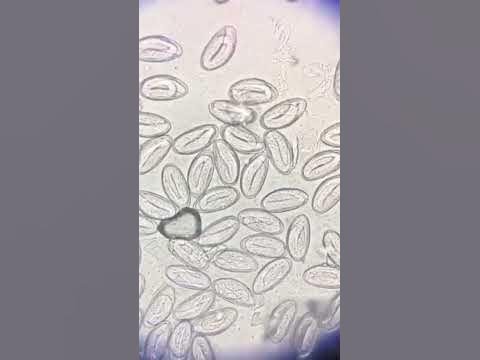
Now, before you visualize a classroom filled with wriggly worms, let me clarify. This isn’t about letting kids handle these little critters directly. Instead, we’re focusing on how to use them in a controlled, safe manner to spark curiosity among students. Just like using a microscope to explore cells, observing pinworms can help students grasp concepts like ecosystems, parasitism, and even human health. So grab your lab coat, and let’s explore how to effectively use pinworms in science demonstrations!
Why Use Pinworms in Science Classes?
Understanding Parasites
Using pinworms in school science demonstrations helps students learn about parasites in the most relatable way. Parasites are organisms that live on or in a host and benefit by harming their host in some way. Pinworms, which primarily inhabit the intestines of humans, are a perfect example. They show students how interconnected life is, even at the microscopic level.
Here’s the thing: discussing parasites can feel pretty abstract. But by looking at a pinworm’s life cycle, students can see how it affects its host—and ultimately, how it plays a role in the ecosystem. This connection can spark important conversations about health, hygiene, and even broader environmental themes.
Engaging Students
You know that feeling when a teacher brings in something unexpected? A live demo can really energize the classroom! When students learn about something as unique as pinworms, their interest piques. This excitement can lead to engaging discussions and questions—like why pinworms are more common in children than adults or how they spread.
Using pinworms can also encourage students to think critically about health behaviors. For instance, discussing the importance of handwashing can segue into lessons on disease prevention. It’s about making science personal and relevant, turning abstract concepts into real-world applications.
How to Source Pinworms for Demonstrations
Safety and Ethical Considerations
Before diving into demonstrations, it’s crucial to address safety. You can’t just head to the backyard and start digging for pinworms! Instead, look for reputable sources that provide pinworms specifically for educational purposes. Many suppliers specialize in providing safely preserved specimens or educational kits that include pinworm samples for classroom use.
Make sure to review all safety protocols. Prepare students beforehand about proper handling procedures, even if they’re just observing the specimen. Understanding how to approach these tiny creatures respectfully can lead to more thoughtful discussions.
Where to Find Educational Kits
There are a few reliable suppliers that focus on science education. Some popular options include:
- Carolina Biological Supply Company
- Bio-Rad
- Home Science Tools
These suppliers often provide kits that come with everything from preserved specimens to detailed lesson plans, making it easier for educators to integrate pinworm studies into their curriculum.
Setting Up the Demonstration
Preparing the Space
When planning your pinworm demonstration, think about how you’ll set the stage. Create an environment that encourages curiosity. A clear workspace with good lighting and access to materials like microscopes or slides will help students focus.
Consider using engaging visuals, like charts or videos, to show the life cycle of pinworms. This can help students visualize what they might not be able to see with their naked eyes. A little setup can go a long way in making your demonstration effective.
Step-by-Step Demonstration
Here’s a simple outline for your classroom demonstration:
1. Introduction: Start with a brief explanation of pinworms, what they are, and why they’re important.
2. Materials: Show students the preserved pinworm specimens. If possible, have them observe these under a microscope.
3. Discussion: Discuss the life cycle of pinworms, including how they reproduce and how their eggs are spread. Use diagrams or videos to enhance understanding.
4. Hands-On: If your kit allows, let students engage with the specimens safely. Have them draw what they see.
Following this outline can keep students engaged and help reinforce key concepts.
Helpful Teaching Strategies
Encouraging Questions
Create an environment where students feel comfortable asking questions. If a student wonders about how pinworms affect health or why they’re called “pinworms,” that inquiry can open doors to deeper discussions about human biology and parasite-host relationships.
Encourage students to brainstorm solutions or preventive measures against pinworm infections. This kind of critical thinking connects lessons to real-world issues, making learning more relevant.
Incorporating Technology
Today’s students love technology, so why not use it in your demonstration? Show videos that depict how pinworms interact with their environment or create interactive quizzes that test knowledge after the lesson. Tools like Kahoot! or Quizlet can make learning fun while reinforcing what students have learned about pinworms.
Addressing Common Challenges
Student Sensitivity
Some students might feel uncomfortable discussing parasites or viewing preserved specimens. It’s important to create a safe space for all feelings. Reassure students that it’s normal to feel squeamish and emphasize the educational value. Framing the discussion around the importance of hygiene and health can also reduce discomfort.
Curriculum Integration
Integrating pinworms into your science curriculum might seem challenging at first, but it doesn’t have to be. Relate the lessons to broader topics in biology, health, and even environmental science. Making connections between these areas can enhance learning and make lessons more cohesive.
Using pinworms in school science demonstrations might be unconventional, but it can open up a world of learning for students. This unique approach helps demystify parasites and fosters discussions about health, biology, and our role in the ecosystem. By carefully sourcing specimens, creating engaging setups, and encouraging student inquiry, you can make pinworms an exciting part of your science curriculum. So, the next time you plan a lesson, consider how these little creatures might inspire curiosity and a love for science among your students. After all, learning about the tiny things can lead to big ideas!
